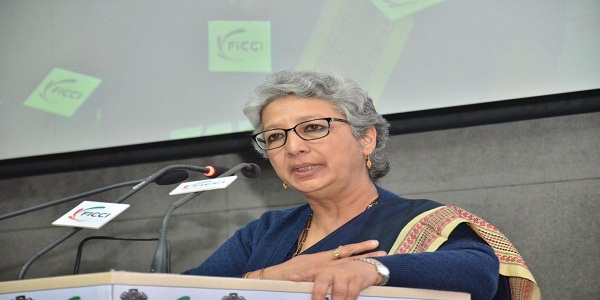-
UNION INTERIM BUDGET 2024-25 -
-
Are cryptocurrencies the future of the digital world economy -
-
Breaking Waves, Breaking News: Lakshadweep’s Recent Developments Explored -
-
The Impact of the Digital Economy on Business and Society -
-
Augmented Marketing: A Comprehensive Guide -
-
How To Strengthen Your Email Marketing Using AI -
-
How Artificial Intelligence and Digitization Are Transforming Our Lives -
-
What Data Science Tools do the Experts Recommend? -
-
Robotic Process Automation Will Transform Your Business? Check Here! -
-
Edge Computing: How it is Reshaping Cloud Infrastructure -
RCEP must include higher level of services in India-ASEAN trade basket says Commerce Secretary
New Delhi: Commerce Secretary, Rita Teaotia said that a speedy and successful conclusion of the Regional Comprehensive Economic Partnership (RCEP) with ASEAN would be possible only with the inclusion of a higher level of services and investment in the India-ASEAN trade basket.
Speaking at the plenary session on ‘ASEAN-India Trade, Investment and Technology’ at the Delhi Dialogue X, the Commerce Secretary emphasised that services account for half of the GDP of the negotiating countries and therefore leaving services at a low level of ambition could not result in a balanced and complete outcome of the partnership agreement.
RCEP is a proposed trade pact between 10 ASEAN countries and their six FTA partners, namely Australia, China, India, Japan, Korea and New Zealand. It accounts for 25 per cent of global GDP, 30 per cent of global trade, 26 per cent of foreign direct investment (FDI) flows and 45 per cent of the total population.
“Today the conversation is that the agreement on goods is easy and therefore the ambition should be to move from 86 per cent to 92 per cent. On the other hand, the argument is not to go beyond 60 per cent of services and that too with several caveats,” she said.
Economic Partnership between India and ASEAN is Deepening
Dato Ramesh Kodammal, Co-Chair ASEAN India Business Council (AIBC) ASEAN, Kuala Lumpur, said that the ASEAN-India region together represents a combined population of 1.85 billion, which is a quarter of the global population and a GDP of over US$ 3.8 trillion, creating one of the largest economic spaces in the world. Economic partnership between India and ASEAN is deepening day-by-day and witnessing a dynamic phase. For the first time, bilateral trade between ASEAN and India has crossed US$ 80 billion mark, highest volume of trade in goods that ASEAN and India have witnessed ever since they signed FTA in 2010. He hoped that the RCEP, currently under negotiation, would be concluded soon.
Rashesh Shah, Co-Chair, AIBC, President of FICCI and Chairman & CEO, Edelweiss Group, said that the AIBC discussion earlier in the day centred around trade negotiations, market access, preferential tariffs, partnerships in technology and skills, connectivity, women’s issues and other areas of social and cultural significance. Based on the three pillars of goods, investment and services, the RCEP aims to be the largest free-trade bloc in the world and will have a great impact on trade relations between India and ASEAN and rest of the FTA partners, he added.
Shah said that the AIBC identified a host of sectors for India-ASEAN cooperation, including infrastructure, health, education and skills, technology, pharma and biotechnology, agri and agri-products and processed food industry, textiles and fashion, IT and electronics and defence and defence production.
Karan Singh Thakral, Executive Director, Thakral Group of Companies, Singapore, stressed on the need to create avenues conducive to two-way investment by SMEs in both ASEAN and India.
Shanti Shamdasani, President ASEAN International Advocacy and Council Member, AIBC, Indonesia, urged India to project the opportunities for ASEAN companies in India’s marine sector and suggested both sides to steer clear of non-tariff measures that crop up even after business deals have been firmed up.































